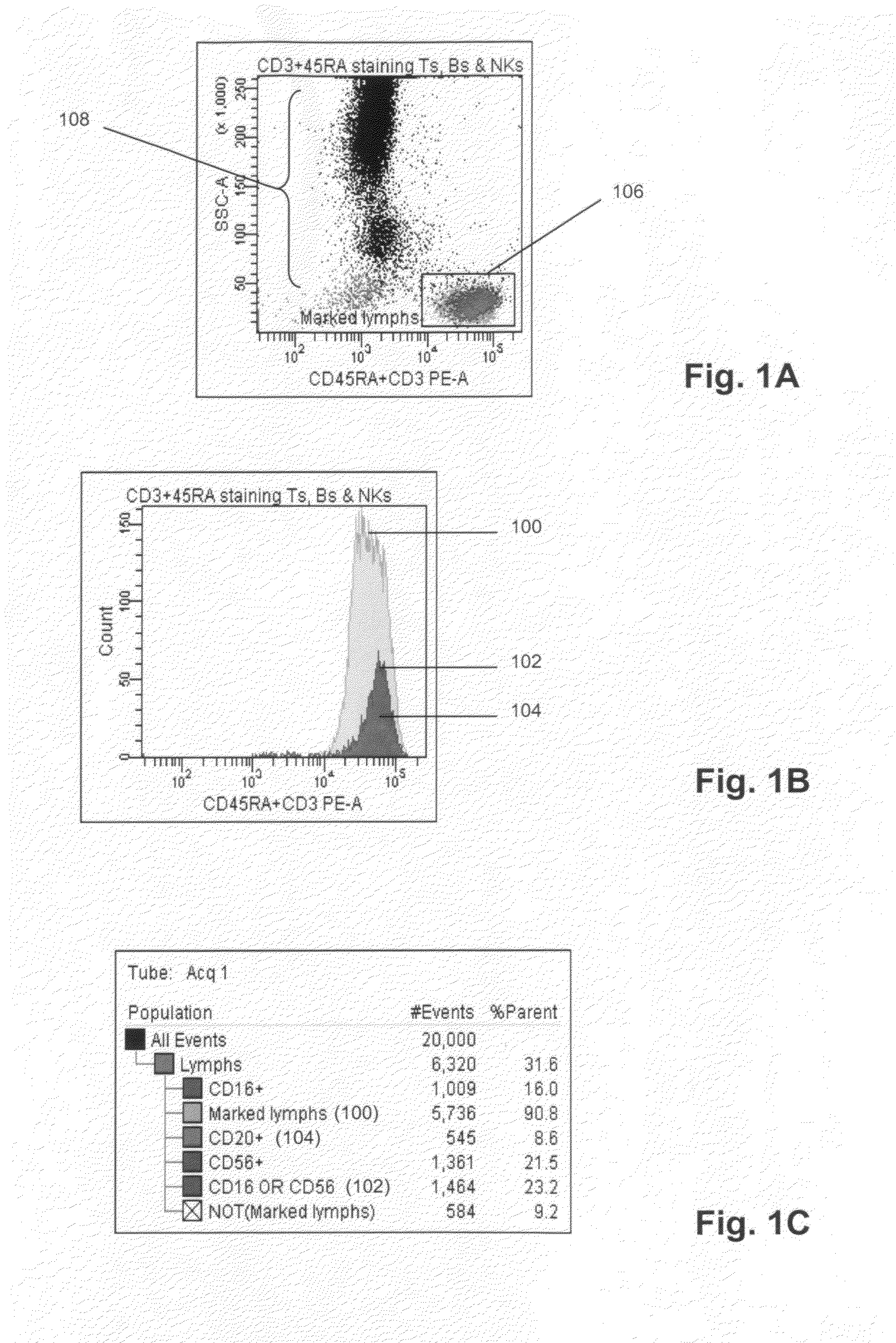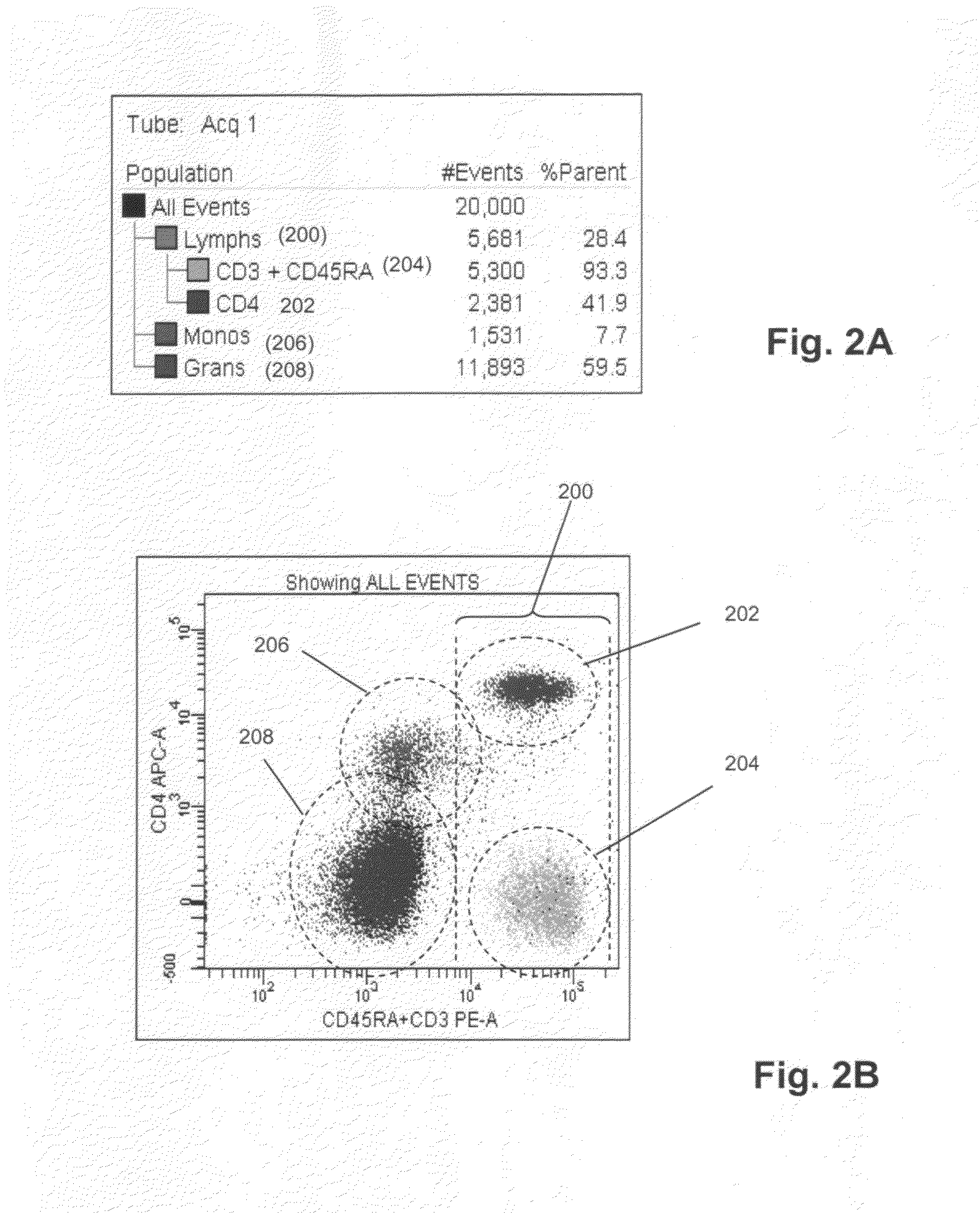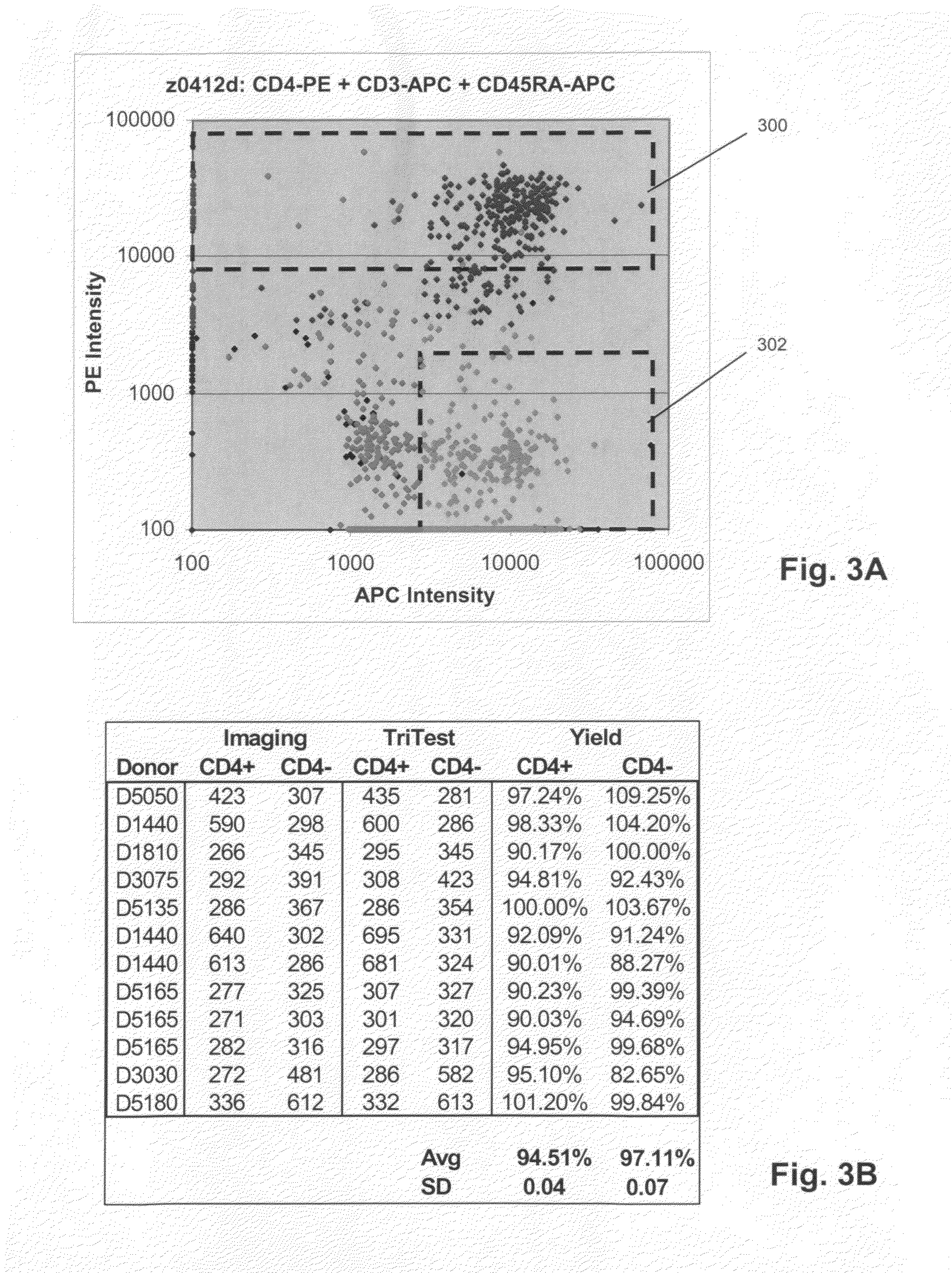Method of analyzing lymphocytes
a lymphocyte and lymphocyte technology, applied in the field of lymphocyte analysis, to achieve the effect of convenient and effective methods
- Summary
- Abstract
- Description
- Claims
- Application Information
AI Technical Summary
Benefits of technology
Problems solved by technology
Method used
Image
Examples
examples
[0032]Several examples of the probes of the invention were prepared and tested on whole blood samples from normal individuals. Commercially available reagents (e.g. BD Biosciences, San Jose, Calif.) were employed and used in accordance with manufacturer's instructions. Unless otherwise noted, scatter and fluorescent intensity measurements were made on a FACSCanto flow cytometer (BD Biosciences, San Jose, Calif.).
[0033]50 μL whole blood was combined with 20 μL anti-CD45RA antibody labeled with phycoerythrin (PE) (BD Biosciences, San Jose, Calif.), 20 μL anti-CD3 antibody labeled with phycoerythrin (PE) (BD Biosciences, San Jose, Calif.), 5 μL anti-CD16 antibody labeled with PE-Cy7 (BD Biosciences, San Jose, Calif.), 5 μL anti-CD56 antibody labeled with APC (BD Biosciences, San Jose, Calif.), and 20 μL anti-CD20 antibody labeled with PerCP-Cy5.5 (BD Biosciences, San Jose, Calif.), after which side scatter and PE fluorescence measurements were made with a FACSCanto flow cytometer. Port...
PUM
| Property | Measurement | Unit |
|---|---|---|
| fluorescent | aaaaa | aaaaa |
| fluorescence | aaaaa | aaaaa |
| imaging | aaaaa | aaaaa |
Abstract
Description
Claims
Application Information
 Login to View More
Login to View More - R&D
- Intellectual Property
- Life Sciences
- Materials
- Tech Scout
- Unparalleled Data Quality
- Higher Quality Content
- 60% Fewer Hallucinations
Browse by: Latest US Patents, China's latest patents, Technical Efficacy Thesaurus, Application Domain, Technology Topic, Popular Technical Reports.
© 2025 PatSnap. All rights reserved.Legal|Privacy policy|Modern Slavery Act Transparency Statement|Sitemap|About US| Contact US: help@patsnap.com



